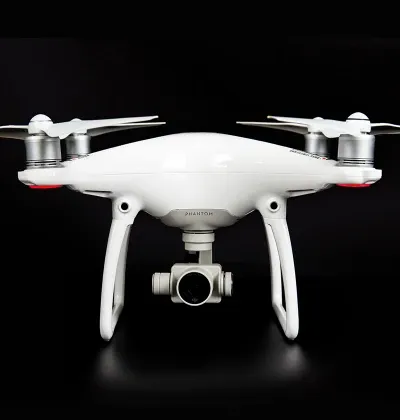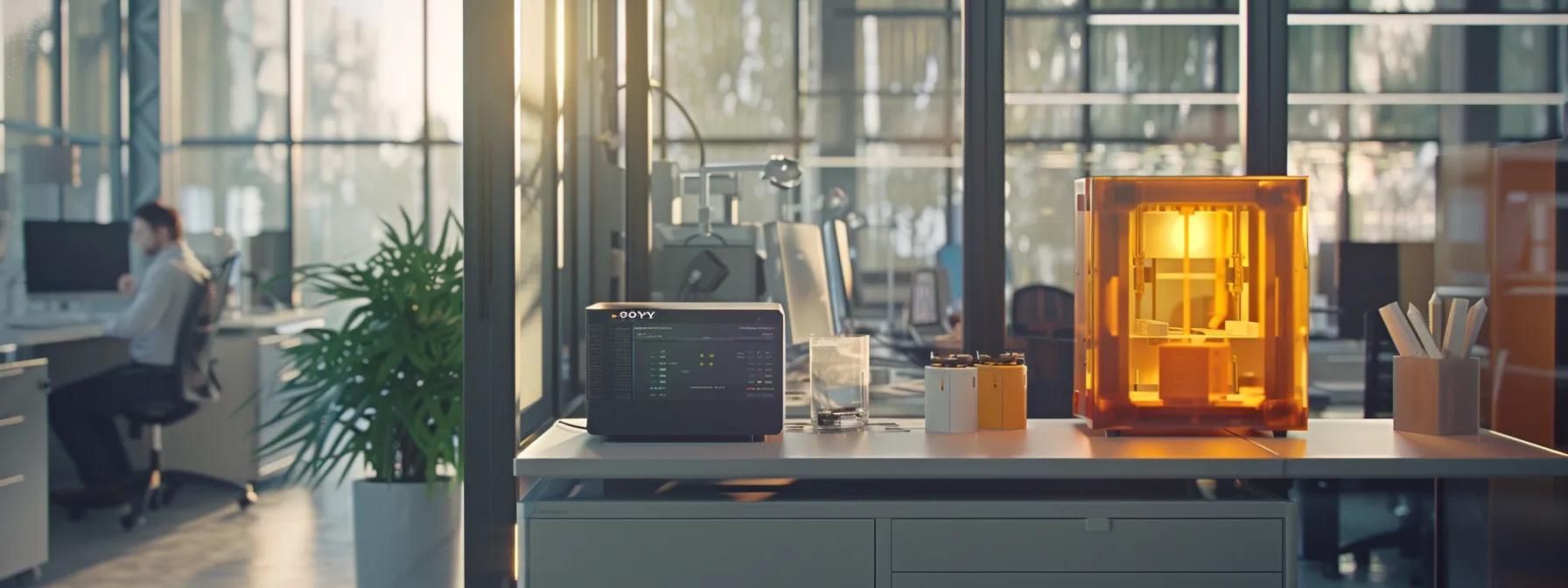- Room 1807, Unit 9, Building 2, Shangxing Commercial Street, Shangde Road, Shangxing Community, Xinqiao Subdistrict, Bao'an District, Shenzhen City, China




Aerospace & UAV
WJ Prototypes is your 3D manufacturing partner from prototype to large scale production.
Consumer Electronics
New Product Introduction Solutions for Consumer Electronics.

Robotics & Automation
Need some assistance bringing your robotic device or parts from the sketch-board to reality?
Medical Devices
The medical industry needs high quality, dependable and safe parts and products.
Automotive
New Product Introduction Solutions for Automotive
Industrial Machinery
The main purpose of industrial prototyping is to take the product from drawings into the real world.

In today's rapidly evolving manufacturing landscape, 3D printing offers a transformative approach by building objects layer by layer from digital models. This article discusses key pros and cons of additive manufacturing, highlighting the underlying technology, various 3D printing methods, and practical considerations affecting industries such as aerospace, healthcare, and consumer products.
Additive manufacturing, commonly known as 3D printing, creates objects by depositing material in layers based on digital designs. Unlike traditional subtractive methods that remove material from a block, 3D printing assembles items layer by layer. Materials range from plastics like ABS and PLA to metals, ceramics, and even biological substances. A typical 3D printer includes a print head (or nozzle), build plate, and software that precisely guides the process.
Now you know what is 3D Printing. This process involves slicing a three-dimensional model into thin layers that are sequentially built up. The controlled deposition ensures each layer adheres firmly to the previous one, enhancing strength and precision. Its efficiency leads to up to a 95% reduction in waste compared to conventional methods.
Unlike injection molding or CNC machining that remove material, 3D printing builds items layer by layer. This allows for the creation of complex internal structures and reduces lead times and inventory costs through on-demand production.
3D printing supports a wide variety of materials, including thermoplastics, photopolymers, metals, ceramics, composites, and even living cells. Material choice affects the final product’s strength, flexibility, and durability, making it essential for applications from rapid prototyping to high-strength industrial parts.
A standard 3D printer setup comprises the frame, build platform, material feed system, and control unit. The nozzle deposits material precisely, while computer software slices models into layers and provides machine instructions. Modern systems also incorporate sensors for real-time quality monitoring.
Different 3D printing technologies serve various applications through unique advantages in speed, resolution, and material properties.
When exploring the world of 3D printing, you'll find that several prominent technologies stand out, each with its unique strengths and applications. The three most common 3D printing technologies are Fused Deposition Modeling (FDM), Stereolithography (SLA), and Selective Laser Sintering (SLS). Understanding these methods will help you choose the right one for your project, whether it's for rapid prototyping, bespoke manufacturing, or intricate designs.
Fused Deposition Modeling (FDM) is arguably the most accessible and widely used 3D printing technology, particularly among hobbyists and small businesses. It works by extruding molten thermoplastic filament through a heated nozzle, which builds up layers to create your object. This technology is an excellent choice for creating functional prototypes and end-use parts due to its cost-effectiveness and variety of available materials.
On the other hand, Stereolithography (SLA) employs a laser to cure liquid resin layer by layer. This method excels in producing highly detailed and smooth-finish parts, making it ideal for intricate designs, jewelry, and dental applications.
Lastly, Selective Laser Sintering (SLS) utilizes a laser to fuse powdered materials—typically nylon or metal—together, resulting in robust components that can be complex in geometry. SLS is increasingly popular for industrial applications where strength and durability are paramount. By familiarizing yourself with these technologies, you'll be better equipped to select the right method for your specific needs.
FDM extrudes thermoplastic filaments through a heated nozzle. Layer by layer, the filament cools and solidifies to form the object. Its cost-effectiveness and ease of use make FDM popular for rapid prototyping and small-scale manufacturing, often using materials like PLA and ABS.
SLA uses a laser to cure resin into hardened plastic parts. It achieves high precision and fine details, ideal for prototypes, molds, dental applications, and jewelry. The smooth surface finish produced often requires little post-processing despite higher equipment costs.
SLS employs a high-powered laser to fuse powdered materials—plastics, metals, or ceramics—layer by layer. It produces robust parts without the need for support structures, making it valuable in aerospace and automotive sectors.
MJF uses inkjet arrays to deposit a binding agent onto polymer powder followed by heat exposure. It offers fast print speeds and reliable mechanical properties, ideal for consistent mass production of end-use parts.
DMLS is a variant of SLS that fuses metallic powders with a laser. It creates high-strength metal parts, used increasingly for custom implants, engine components, and complex machinery.
3D printing excels in producing complex geometries, enabling customized design and rapid prototyping across industries. Here we discuss about the advantages of 3D Printing.
The technology allows creation of designs with internal lattice structures and complex curves that are impossible with traditional methods. This capacity for intricate and optimized designs boosts performance while reducing material usage.
Rapid prototyping via 3D printing slashes design cycle times by enabling direct fabrication of prototypes from digital files, accelerating product innovation and market entry.
For bespoke or limited-edition products, 3D printing is cost-effective since it eliminates the need for expensive tooling and molds, making it ideal for low-volume runs.
Printing parts as needed reduces storage and inventory costs. On-demand manufacturing streamlines supply chains, allowing quick response to market changes and rapid replacement part production.
3D printing uses only the necessary material, minimizing waste and potentially reducing material costs by up to 90%, which appeals to environmentally conscious manufacturers.
Despite its benefits, several challenges arise with 3D printing. Here we listed a few disadvantages of 3D printing
Quality 3D printing equipment, specialized software, and materials can demand significant initial investments. Additionally, ongoing maintenance and operator training add to the overall costs.
Not all materials used in 3D printing meet the rigorous performance standards required in certain industries, and some printed parts may have limitations in strength and durability compared to those made with traditional methods.
Many 3D printed parts require additional finishing such as surface treatment or support removal, which can add time and expenses to the production process.
While ideal for prototypes and low-volume production, scaling to mass production remains challenging due to slower speeds and the need for multiple printers, making it less competitive against traditional methods.
Since 3D printing relies on digital files, designs can be easily copied or modified, raising concerns over copyright infringement. Companies must invest in robust security measures to protect their intellectual property.
| Attribute | 3D Printing Benefit | Traditional Manufacturing Benefit | Comparison Value |
| Cost Efficiency | Lower setup costs for prototyping | Lower per-unit costs for high volumes | 50% cost reduction at prototyping stage |
| Production Speed | Rapid iteration; quick customizations | Streamlined, high-volume output | 70% faster prototyping in small runs |
| Design Flexibility | Complex, customized geometries | Standardized, uniform production | Unlimited customization vs fixed designs |
| Environmental Impact | Minimal waste; on-demand production | Higher material waste in machining | Reduced waste and lower carbon footprint |
| Material Variety | Wide range of plastics, metals, etc. | Often limited material options | Greater selection supports innovation |
The table above summarizes key comparisons between 3D printing and traditional manufacturing methods. Recent innovations in 3D printing have led to significant advancements in product customization and rapid prototyping. While traditional production excels in mass production efficiency, 3D printing—employing techniques such as SLS 3D printing and MJF 3D printing—offers superior design flexibility, sustainability, and cost benefits during the prototyping phase. This comparison assists in determining the best approach based on the unique requirements of each project.
As you move forward in digital manufacturing, balancing production needs with the strengths and weaknesses of each method will be critical. In many cases, innovative approaches such as 3D printing have begun to influence the industry significantly. The evolving landscape of 3D printing promises ongoing innovation, rapid prototyping, and customized manufacturing that can complement or even surpass traditional processes. Whether you are a product designer, engineer, or manufacturer, exploring advanced techniques like SLS 3D printing and MJF 3D printing will empower you to deliver high-quality, innovative products that meet market demands efficiently.
The impact of 3D printing differs across industries, with each sector balancing benefits against challenges.
In aerospace and automotive industries, reducing weight while maintaining strength is crucial. 3D printing supports the production of lightweight, complex components that enhance fuel efficiency, though strict certification and rigorous testing remain necessary.
Personalized healthcare applications such as custom prosthetics, dental implants, and surgical guides benefit from the technology’s customization capabilities, even as regulatory hurdles and material biocompatibility issues must be managed.
Consumer products benefit from the ability to customize items—from wearable devices to home decor—although production speed and material limitations may limit scalability.
Educational institutions use 3D printing to foster innovation and hands-on learning in digital modeling. However, equipment and material costs can be barriers for widespread classroom adoption.
3D printing offers both environmental benefits and challenges. Its efficient material use reduces waste, yet some processes consume high energy.
By using only required materials, 3D printing minimizes waste, and on-demand production helps reduce resource consumption and carbon emissions linked to large inventories.
Certain methods, especially those involving metal sintering, consume significant energy. Moreover, the use and disposal of some plastic materials can raise pollution concerns.
While traditional methods may waste more material, some can use less energy per unit production compared to high-resolution 3D printing. A careful energy analysis is essential when choosing a manufacturing process.
Advancements continue to extend 3D printing’s potential through new technologies and materials that address current limitations.
Innovations such as Continuous Liquid Interface Production(CLIP) and multi-material printing are enhancing print speed and quality, with research into integrating artificial intelligence for real-time process optimization.
Research is underway to develop faster-curing resins and more efficient sintering techniques. Improved design and energy-saving protocols aim to lower operational costs and environmental impact.
As supply chains evolve and customization becomes more critical, analysts predict significant expansion in the market. Industries such as aerospace, healthcare, and consumer products are expected to integrate 3D printing further to reduce costs and improve efficiency.
When exploring the fascinating world of 3D printing, you'll discover a diverse array of 3D printing materials that can be utilized to bring your ideas to life. The most common material is thermoplastic, with PLA (polylactic acid) being a popular choice among beginners and hobbyists. PLA is derived from renewable resources like cornstarch, making it environmentally friendly and easy to use. Its user-friendly nature allows for impressive detail and vibrant colors, making it a favorite for creating prototypes, toys, and decorative items.
Another widely used thermoplastic is ABS (acrylonitrile butadiene styrene), known for its durability and strength, making it ideal for functional parts and applications that require impact resistance.
In addition to thermoplastics, there are also metal powders that can be used for industrial 3D printing, especially in processes like selective laser melting (SLM). Metals such as titanium, stainless steel, and aluminum can be precisely layered to produce strong, functional parts for sectors like aerospace and automotive. If you're inclined toward creating intricate and aesthetically appealing objects, resin printing, which employs photopolymer materials, opens up yet another dimension.
This technology is perfect for producing high-resolution models with fine details, suitable for jewelry, dental applications, and even artistic creations. As you delve deeper into 3D printing, considering the properties of these various materials will help you choose the right one for your specific projects and aspirations.
New materials, including bio-based polymers and advanced composites, are emerging rapidly. Hybrid printing methods that combine additive and subtractive techniques promise improved performance and durability.
Careful evaluation of technical and economic factors is essential when considering 3D printing for production.
Assess whether 3D printing meets your design complexity and production volume requirements. It is ideal for rapid prototyping and customized, low-volume production, though high-volume projects may be better served by traditional methods.
Choose the right technology—FDM for low-cost prototypes, SLA for high precision, or DMLS for metal parts—based on material properties, print resolution, and production speed.
Calculating total ownership costs, including equipment, maintenance, and training, is key. Weigh these against the potential savings from waste reduction, rapid prototyping, and on-demand production.
Successful implementation relies on skilled operators familiar with digital modeling, printer calibration, and post-processing techniques. Continuous training and certification are essential to keep pace with technological advancements.
Q: What is the primary advantage of 3D printing?
A: 3D printing enables the creation of complex, customized parts on demand, reducing waste and accelerating product development.
Q: How does 3D printing differ from traditional manufacturing?
A: It builds objects layer by layer from digital files, minimizing material use and allowing rapid prototyping of intricate designs.
Q: What industries benefit the most from 3D printing?
A: Aerospace, healthcare, automotive, and consumer products benefit through rapid prototyping and customization.
Q: Are there significant environmental benefits to using 3D printing?
A: Yes, reduced waste and on-demand production help sustainability, though some processes consume high energy.
Q: What challenges should be considered before adopting 3D printing?
A: Consider high initial costs, material limitations, post-processing needs, and intellectual property protection.
3D printing offers transformative capabilities by producing intricate parts on demand while reducing material waste and expediting design cycles. However, high setup costs, material limitations, and scaling challenges must be carefully weighed. By evaluating project needs, technology options, and ROI, you can leverage 3D printing to drive innovation and maintain competitiveness in a dynamic market. Embrace continuous learning and technological advancement to harness the full potential of additive manufacturing.